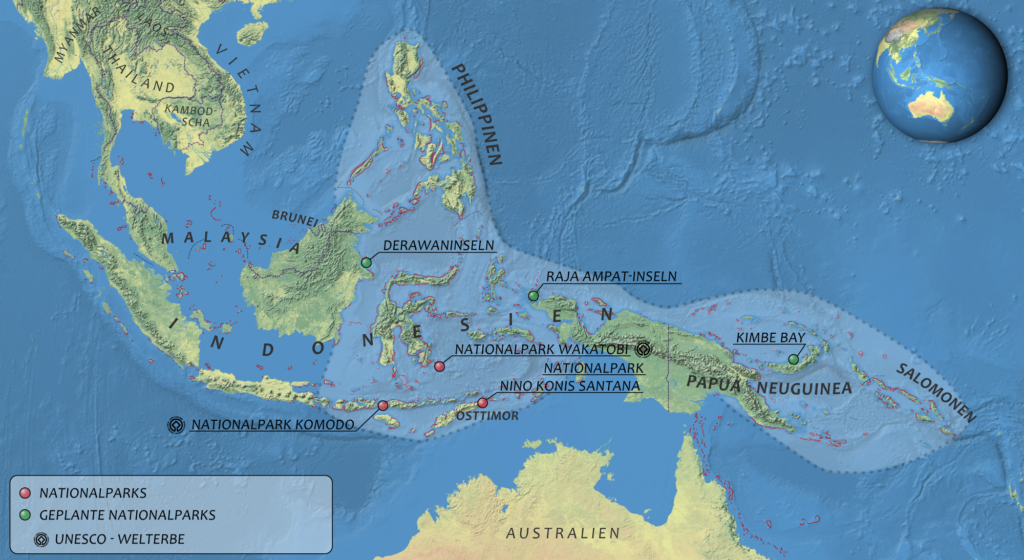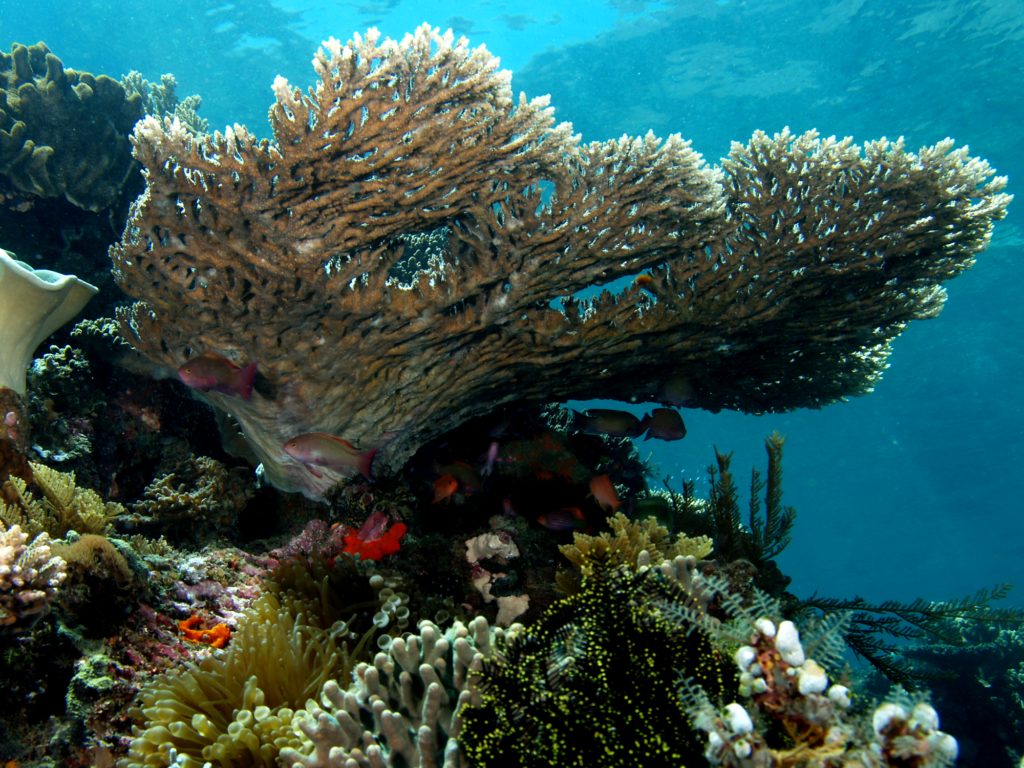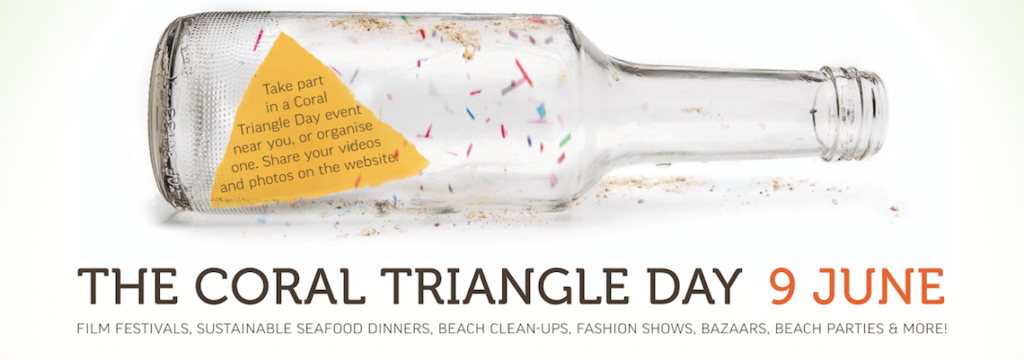It is an unfamiliar term—the “coral triangle.” We all know about the Amazon rainforest as the largest and most significant tropical forest in the world. But what about coral reefs and their seascapes? Is there an equivalent of the Amazon for coral reefs?

Indeed there is. The coral triangle is to coral reefs what the Amazon is to rainforests. The coral triangle is a huge area—more than a billion acres, about half the size of the continental United States—located at the juncture of the South Pacific and Indian Oceans. The area includes the waters of six nations—the Philippines, Indonesia, Malaysia, Papua New Guinea, Solomon Islands and Timor-Leste. The marine resources of the coral triangle provide food and jobs of 130 million people.

The coral triangle contains the richest coral-reef ecosystems in the world. Roughly three-quarters of the world’s known coral species live there (more than 500 species), along with 6 of the world’s 7 marine turtle species and one-third of the world’s coral-reef fish species. Scientists believe that coral reefs evolved in the triangle and radiated to other areas across the world’s oceans, including Australia’s Great Barrier Reef (learn more about the Great Barrier Reef here). The triangle supports other marine life, like blue and sperm whales, dolphins and dugongs, that graze on the abundant flora and fauna of the reefs.
The nations comprising the coral triangle ratified a treaty in 2009 to sustainably manage the region and its resources. The “Coral Triangle Initiative on Coral Reefs, Fisheries, and Food Security (CTI-CFF)” works through a permanent staff located in Manado, Indonesia and is partnering with leading conservation groups like Conservation International, The World Wildlife Fund, and The Nature Conservancy. Primary concerns include unsustainable development and tourism, overfishing, destructive fishing (using explosives or cyanide-based chemicals), coral bleaching and climate change. The region is of special interest to scientists and conservationists because it appears to be weathering the effects of climate change better than other areas.

As part of their work, the CTI-CFF created Coral Triangle Day, celebrated annually on June 9. The date was chosen to piggy-back on World Oceans Day, which occurs annually on June 8. The first celebration was held in 2012. The organizers state that the goal “is to position the Coral Triangle as a globally-significant ecoregion—a modern day icon of the natural world so that millions of people learn more about its significance to their everyday lives and are empowered to take specific actions to help conserve and protect this natural treasure.” Although the focus of the day is on the nations in and around the triangle, celebrations are welcomed around the world.
So, if you are looking for an excuse for a beach party on June 9, now you’ve got the reason! Let’s hear it for the Coral Triangle!
References:
Conservation International. The Coral Triangle Initiative. Available at: https://www.conservation.org/projects/coral-triangle-initiative. Accessed February 20, 2020.
Coral Guardian. The Coral Triangle. Available at: https://www.coralguardian.org/en/coral-triangle/. Accessed February 20, 2020.
Coral Triangle Initiative. History of CTI-CFF. Available at: http://www.coraltriangleinitiative.org/about. Accessed February 20, 2020.
Coraltriangleday.org. Welcome to Coral Triangl Accessed February 20, 2020e Day 2019. Available at: http://coraltriangleday.org/. Accessed February 20, 2020.
Eschner, Kat. 2017. Three Things to Know About the Coral Triangle, the Ocean’s Biodiversity Hot Spot. Smithsonian Magazine, June 8, 2017. Available at: https://www.smithsonianmag.com/smart-news/three-things-know-about-coral-triangle-180963561/. Accessed February 20, 2020.
